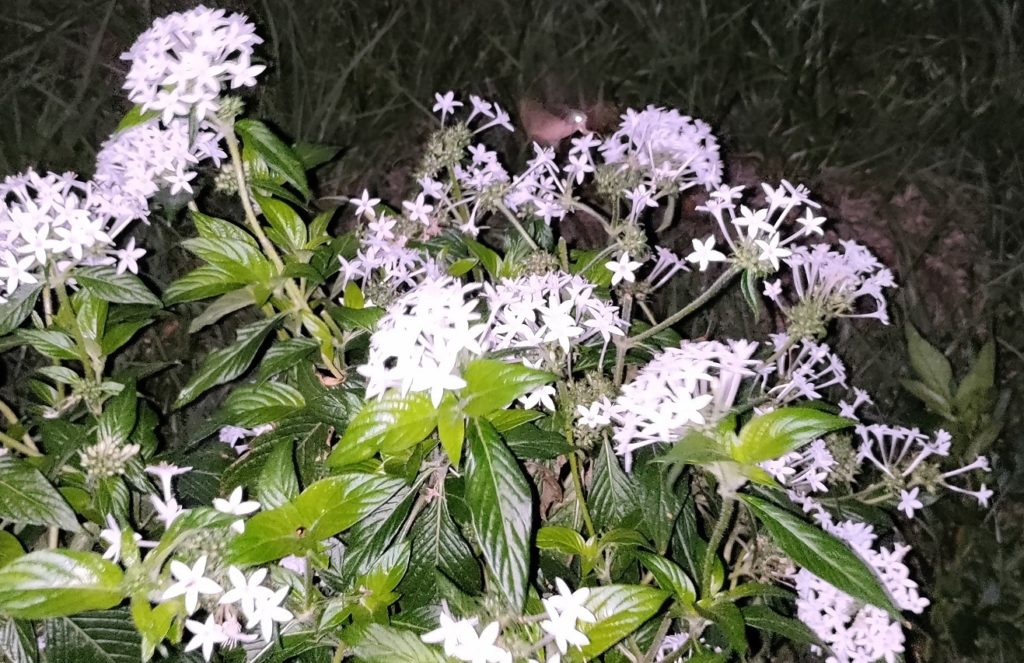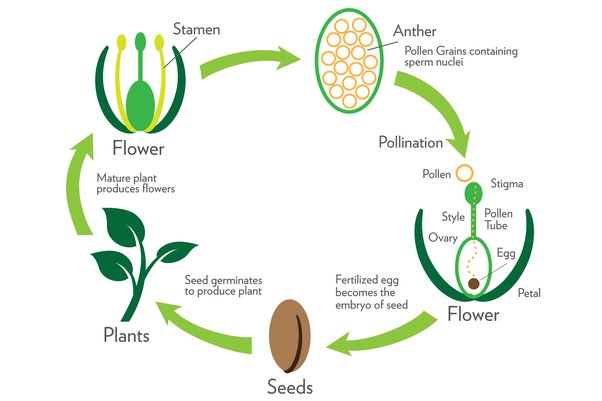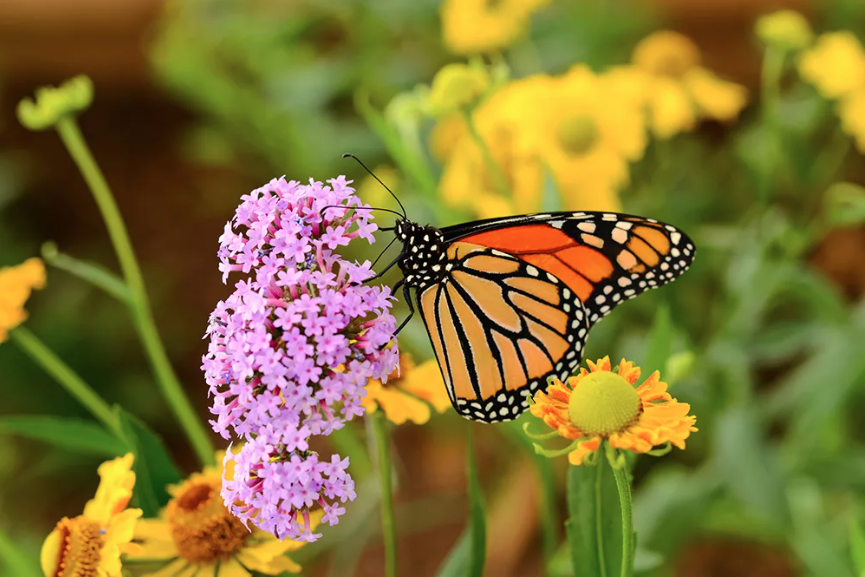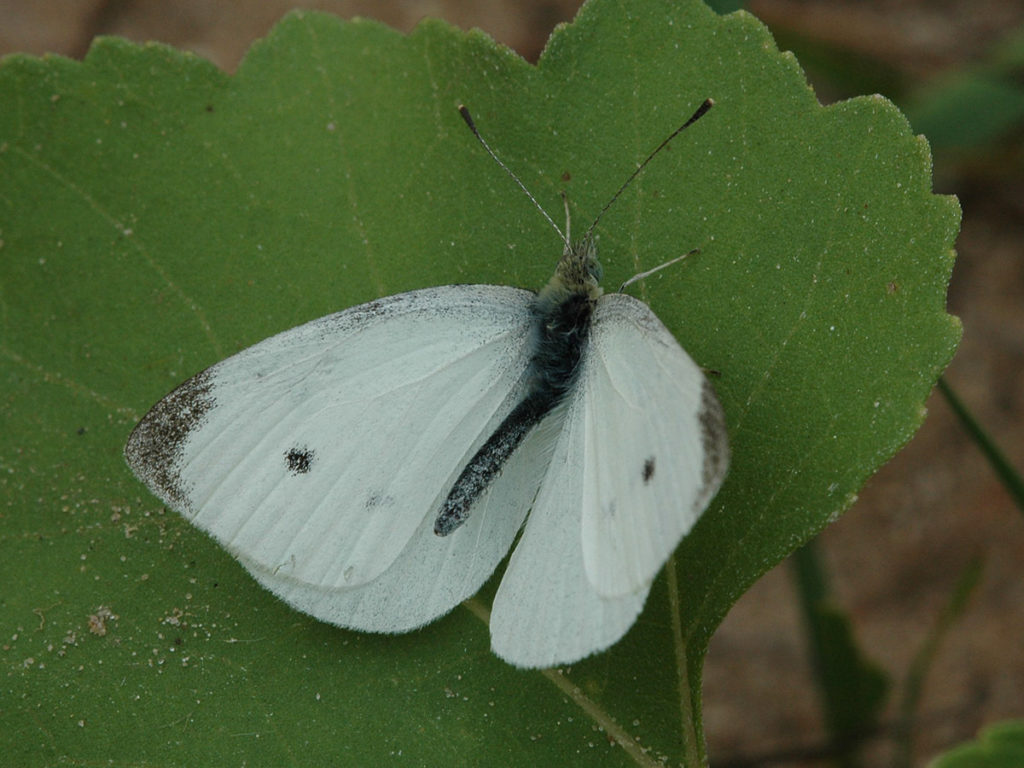In our last article, we briefly discussed the life cycle of a butterfly. During their four life stages, these amazing insects change from an egg to a caterpillar to a chrysalis and then to an adult butterfly. Typically, this entire process takes about a month.
As adult insects, butterflies are pollinators. That means they carry pollen, a powdery substance produced by seed plants, from the male part of the flower (stamen) to the female part of the flower (stigma). This fertilization process allows the plant to reproduce and is important for other forms of life, including humans, that eat fruits, seeds, leaves, and vegetables.
Although some plants, such as corn, are self-pollinating, most plants are not. They depend upon bees, butterflies, and other insects and animals (including bats) to move pollen whether by accident or on purpose. Because many people don’t know that butterflies carry pollen, you might say that these flying insects are the “forgotten pollinators”. As such, they’re important to our ecosystem.
Planting a butterfly garden is a great way to help butterflies thrive. You’ll find it’s like that line from the movie Field of Dreams: “If you build it, they will come.” Plus, because of the butterfly’s life cycle, you can make a difference in the population of a wildlife species in just one month. It’s the only thing in nature that’s like this, and you’ll enjoy seeing colorful butterflies nearby.
Make sure to choose the right types of plants, however, and remember that using only native plants can be challenging. That’s because most native plants bloom only once a year and for just a month or two at a time. For example, there’s a plant called the Blazing Star with fuzzy, thistle-like blossoms that attracts butterflies, but it blooms for just a few months.
Here in Florida, the Penta plant blooms year-round and is a great choice for butterfly gardens. In parts of the country where the milkweed plant grows, you’ll find Monarch and Queen butterflies there. If you buy so-called “butterfly plants” from a Big Box store, consider the risk of introducing an invasive species. Many of these plants come from South Florida and are sprayed with insecticides, but that might not be something that you want either.

So, what do butterflies like? They sip nectar, a sugary fluid that is secreted by plants, especially within flowers. Nectar is the butterfly’s energy source, which makes it kind of like Gatorade for us. Butterflies aren’t interested in the flowers on your vegetable plants, so if you see a flying insect that looks like a butterfly, it might be a moth depending on the time of day. One way to tell is that butterflies are active during the daylight hours but moths are active at night.

With corn, moth ear worms can be destructive since they burrow into the kernels. Tomato horn worms chew the leaves on tomato plants and become Sphynx months. So, they’re not butterflies either!
In fairness, there are several species of butterflies that compete with us for crops. Black Swallowtail butterflies eat parsley, dill, and fennel. Great Southern White butterflies eat mustard and collard. There’s also a butterfly called the Cabbage White that eats cabbage.
Caterpillars, of course, eat the leaves on many types of plants, but that’s not always a bad thing. If you have azaleas like we do here in Florida, you might notice some caterpillars (future Yellow Skipper butterflies) eating the leaves. That actually allows new leaves to emerge and complements the plant’s growth.
So, please don’t blame the butterflies for problems in your flower beds or vegetable gardens. Welcome these forgotten pollinators instead, and consider building a place for them to come.



